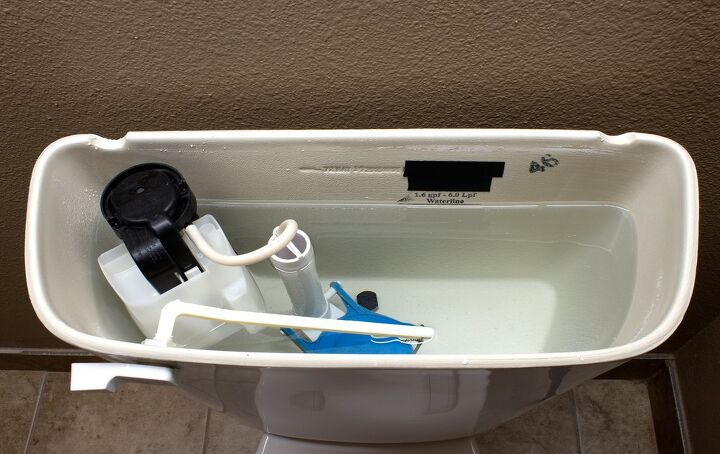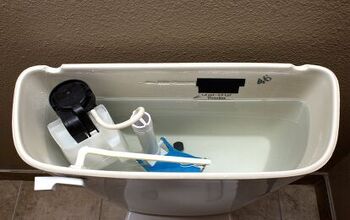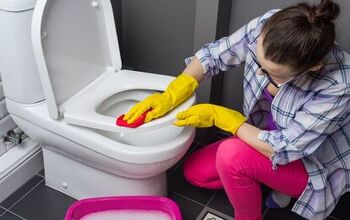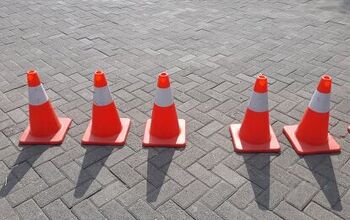Can I Put Bleach In My Toilet Tank? (Find Out Now!)

Bleach is used for many different reasons. But in most homes, bleach is mainly used to get stains out of clothes or as a reliable disinfectant. Bleach can be used to make plumbing fixtures more sanitary, and it can also help bring out the porcelain shine that a lot of plumbing fixtures have when they’re brand new.
But often individuals wonder about how much bleach they should use at home, as consuming this substance is lethal while mere contact with it can cause skin irritation. This article will answer the question, “Can bleach be used in a toilet tank?” and some other important points on toilet tank cleaning will be put forward as well.
While bleach can be used to clean the inside of a toilet tank, there are a few reasons why most homeowners don’t clean toilet tanks with bleach. Bleach, while being a good disinfectant and deodorizer, can damage the toilet’s structure and components. It’s also highly toxic, meaning prolonged exposure to it can lead to adverse health consequences.
Do You Need a Maid Service?
Get free, zero-commitment quotes from pro contractors near you.

Can Bleach Be Used in Toilets?
Bleach is a disinfecting agent that has been around for a long time, and few disinfectants can match its power. Because it’s so good at killing bacteria, mold, mildew, and other microorganisms, many homeowners wonder if bleach can be used in toilet tanks to ensure these components are completely clean.
When a toilet tank is completely emptied, often left behind is a thick sludge. This sludge consists of bacteria, mineral buildup, and other elements that shouldn’t be in your tank.
Technically bleach can be used to eliminate the bacteria that’s in the sludge, and if you did a bleach treatment routinely then it’s likely you wouldn’t have to deal with the sludge problem at all.
What Happens When Bleach Is Used
In short, pouring bleach into the toilet tank would clean the system in a variety of ways. The tank wouldn’t be the only part of the toilet getting cleaned. The bowl would also benefit from a bleach-filled tank, specifically one that’s flushing, as the bowl is the destination when water leaves the tank.
Bleach as an Odor-Eliminator
Bleach would also eliminate bad odors that were emanating from the tank and bowl. A toilet that doesn’t receive regular cleaning will emit a bad odor, mainly because bacteria, leftover waste, grime, and other elements have overrun the toilet.
These elements can hide in far-to-reach places, like under the rim. Bleach that’s entering the bowl from the tank would surely come into contact with these elements, eliminating and/or dislodging them.
The Pros and Cons of Using Bleach
It’s been established by now that bleach is a good disinfectant, deodorizer, and stain-remover, so technically it should be a good toilet-cleaning agent. But you have to weigh the pros and cons of using bleach in a tank before you do so.
One must remember that bleach is a dangerous chemical in more ways than one. The specific pros and cons will be listed below, but it should be expressly stated here that bleach can be very harmful, not only to humans but to the environment and your toilet as well.
Pro One: Killing Bacteria
Bleach is mainly used as a disinfectant, as it kills bacteria and other microorganisms that can make humans sick. When bacteria builds up in the toilet tank, it creates a nasty sludge. This sludge is not only unsanitary but it can inhibit the toilet from operating properly as well.
Bleach can be used to eliminate the sludge, but it’s how you apply the bleach which determines whether the treatment is good or bad.
Pro Two: Eliminating Odors
Bleach is also good at removing odors. It would remove the odors caused by bacteria growth, leftover waste, and other unwanted elements. One thing to keep in mind, however, is that bleach itself has a strong odor, which means you may be replacing one unpleasant odor with another one.
Pro Three: Removing Stains
Bleach is also a terrific stain-remover. If you use it to clean the toilet, it’s quite likely you could make the toilet look brand new.
Bleach is often used when cleaning bathrooms, kitchens, and floors, as it quite literally melts the dirt, grime, and mildew away. You just need to be careful when applying this, as contact with bleach can irritate the skin.
Pro Four: Clearing Clogs
If a clog is inhibiting your toilet from working properly, you can use bleach to kill the bacteria buildup that may be causing this. Pouring bleach down the drain could also, in theory, dislodge a clog that’s deeper down the drain pipe. Just make sure that bleach is never put in an intake pipe.
Con One: Not Eco-Friendly
One downside that can’t be avoided when using bleach is the fact that it’s not eco-friendly. If you poured it on grass or a houseplant, you’d see what kind of destruction it wreaks.
You should consider this when using bleach. And for this reason, you should refrain from ever putting a lot of it down your drain pipe. While the drain pipe leads to the sewer, bleach may degrade the pipe, causing a crack through which bleach can seep into the ground.
Con Two: Toxicity
Bleach is also an incredibly toxic agent, and that’s why great caution should be taken when using it. Exposure to bleach can lead to a variety of negative health consequences, and prolonged exposure to the fumes generated by bleach can give you a headache or even cause your lungs to hurt.
If bleach is used in your toilet, then you’re in close proximity to it every time you do your business. Therefore, if you use bleach, you must make sure it’s entirely out of the system before you use the toilet again.
Con Three: Mixing With Other Chemicals
Bleach can mix with other chemicals and create a big problem. If it mixes with ammonia, for example, then deadly fumes will be the result. For this reason, you should be very careful when using bleach.
Con Four: Can Damage the Toilet
Bleach can also degrade the inside of your toilet. It will break down the porcelain and enamel, destroy metal (if there’s prolonged exposure), and quite literally melt the plastic components.
If you insist on putting bleach in your toilet tank, you must understand what doing so might do to the internal components. Using a small amount of bleach on a rag or sponge might be permissible, but you really should avoid exposing the inner components to bleach.
Con Five: Fumes
Most regard the smell of bleach as one that’s quite unpleasant. Furthermore, prolonged exposure to its fumes can lead to headaches, dizziness, nausea, and other negative health consequences.
Do You Need a Maid Service?
Get free, zero-commitment quotes from pro contractors near you.

Related Questions
What will bleach do to the flush valve seal?
If you’re putting bleach in the tank to clean out the bowl, understand that doing this can damage the flush valve—and quite quickly if this happens a lot. Cleaning the toilet periodically is definitely recommended, but equally important is ensuring your system isn’t overexposed to bleach.
Is removing mineral deposits important?
Mineral buildup should be removed once it’s spotted, as this can attract bacteria and cause clogs. Mineral buildup, when it’s light, is not hard to remove, but removing it becomes harder if you let it expand.

Matt loves everything DIY. He has been learning and practicing different trades since he was a kid, and he's often the first one called when a friend or family member needs a helping hand at home. Matt loves to work with wood and stone, and landscaping is by far his most favorite pastime.
More by Matthew Mountain



























